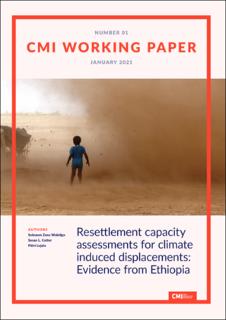| dc.description.abstract | Climate change migration is increasing and necessitates a re-examination of resettlement planning and processes. Although evidence-based selection of host places would improve climate change resettlement outcomes, few methods for the selection of host communities exist. Consequently, the information base on which most resettlement programs select a host place is inadequate.
This article proposes an empirical methodology to assess resettlement capacity. The methodology uses a hierarchical aggregation approach, where resettlement capacity indicator values are aggregated first into sub-dimension resettlement capacity scores, then further into dimension resettlement capacity scores, and finally into an overall resettlement capacity index. The aggregation allows for calculation of the relative importance of the different sub-dimensions and the two primary dimensions – assets and conditions. Using 75 indicators and a hierarchical min-max additive approach based on a five-kilometer grid, we create an overall resettlement capacity index for Ethiopia.
The results show significant spatial variation in resettlement capacity. Low resettlement capacity sites tend to cluster in southeastern and western Ethiopia, while high resettlement capacity sites are scattered in central, southern, and northern Ethiopia. Moderate resettlement capacity sites occur more generally all over Ethiopia. Compared to the low and moderate resettlement capacity sites, those with high resettlement capacity are endowed with human, physical, and financial capital infrastructures. In all three groups, assets contribute significantly less to resettlement capacity than conditions. Places in the western and northern tips of the country are prone to natural hazards both currently and in the future, making part of the moderate resettlement capacity cluster in the northern tip unsuitable for resettlement. The calculated resettlement capacity indices are robust to potential missing indicators a | |
